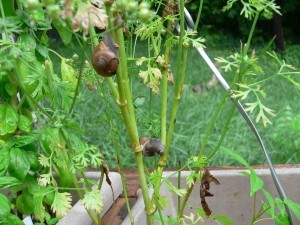The stories we could – and will — tell about implementing on-farm food safety programs for the past 15 years.
 Don’t have a shit around fresh produce; don’t make the worker incentives such that they crap in the fields because they lose money if they go to the bathroom; provide decent handwashing facilities, and stop with nonsensical soundbites.
Don’t have a shit around fresh produce; don’t make the worker incentives such that they crap in the fields because they lose money if they go to the bathroom; provide decent handwashing facilities, and stop with nonsensical soundbites.
As of July 30, 2015 (11am EDT), the U.S. Centers for Disease Control and Prevention had been notified of 358 ill persons with confirmed Cyclospora infection from 26 states in 2015.
Most (199; 56%) ill persons experienced onset of illness on or after May 1, 2015 and did not report international travel prior to symptom onset.
Clusters of illness linked to restaurants or events have been identified in Texas, Wisconsin, and Georgia.
Cluster investigations are ongoing in Texas and Georgia.
Cluster investigations in Wisconsin and Texas have preliminarily identified cilantro as a suspect vehicle.
Investigations are ongoing to identify specific food item(s) linked to the cases that are not part of the identified clusters.
Previous U.S. outbreaks of cyclosporiasis have been linked to imported fresh produce, including cilantro from the Puebla region of Mexico. Read the related FDA Import Alert issued July 27, 2015.
The U.S. Food and Drug Administration, the Centers for Disease Control and Prevention (CDC) and state public health officials have identified annually recurring outbreaks (in 2012, 2013, and 2014) of cyclosporiasis in the United States which have been associated with fresh cilantro from the state of Puebla, Mexico. There is currently (in July 2015) another ongoing outbreak of cyclosporiasis in the United States in which both the Texas Department of State Health Services and the Wisconsin Department of Health Services and the Wisconsin Department of Agriculture, Trade and Consumer Protection have identified cilantro from the Mexican state of Puebla as a suspect vehicle with respect to separate illness clusters.
From 2013 to 2015, FDA, SENASICA, and COFEPRIS inspected 11 farms and packing houses that produce cilantro in the state of Puebla, 5 of them linked to the US C. cayetanensis illnesses, and observed objectionable conditions at 8 of them, including all five of the firms linked through traceback to the U.S. illnesses.
Conditions observed at multiple such firms in the state of Puebla included human feces and toilet paper found in growing fields and around facilities; inadequately maintained and supplied toilet and hand washing facilities (no soap, no toilet paper, no running water, no paper towels) or a complete lack of toilet and hand washing facilities; food-contact surfaces (such as plastic crates used to transport cilantro or tables where cilantro was cut and bundled) visibly dirty and not washed; and water used for purposes such as washing cilantro vulnerable to contamination from sewage/septic systems. In addition, at one such firm, water in a holding tank used to provide water to employees to wash their hands at the bathrooms was found to be positive for C. cayetanensis.
Based on those joint investigations, FDA considers that the most likely routes of contamination of fresh cilantro are contact with the parasite shed from the intestinal tract of humans affecting the growing fields, harvesting, processing or packing activities or contamination with the parasite through contaminated irrigation water, contaminated crop protectant sprays, or contaminated wash waters.
